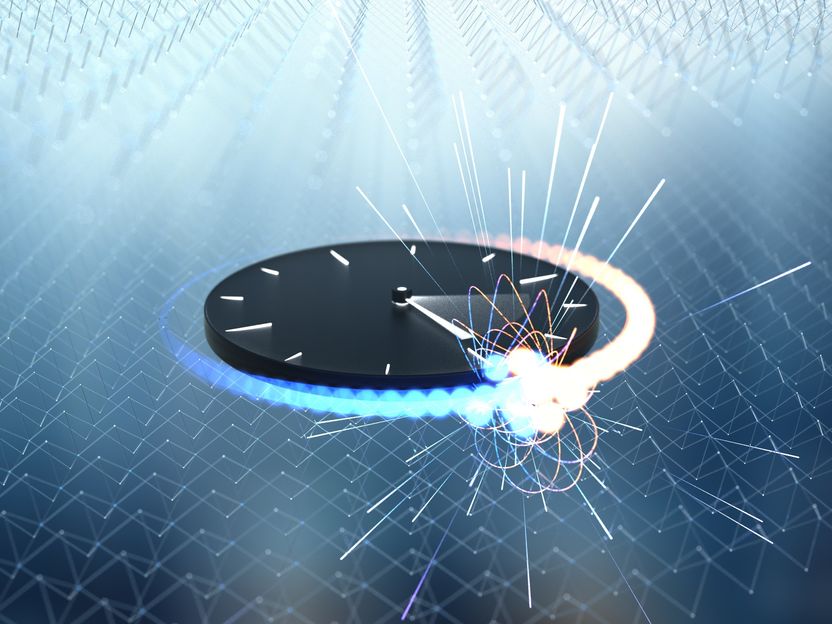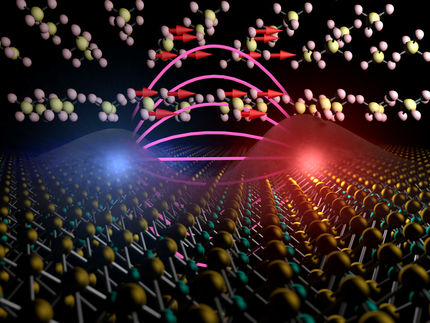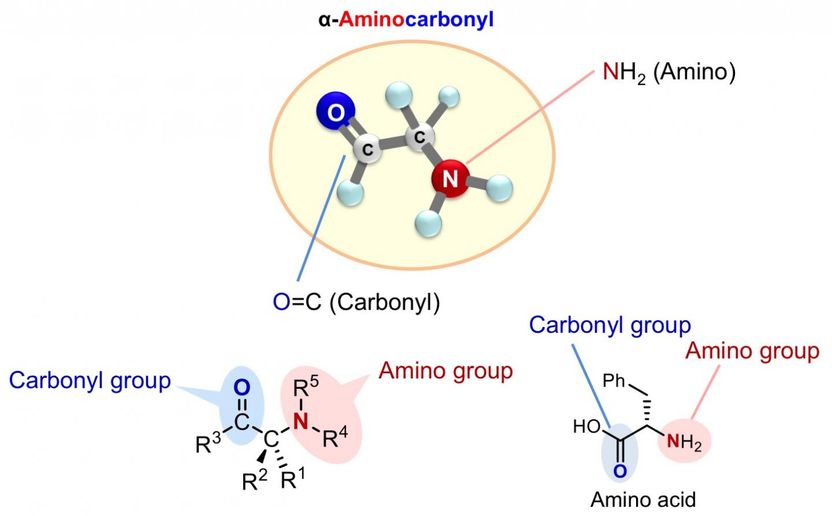A crystalline attoclock
Physicists measure the dynamics of mobile electrons in solids with unprecedented time resolution
From experience, driving through the city centre takes longer than covering the same distance on an open country road. After all, you will encounter a lot of other road users, red lights, road works and traffic jams in the city centre. Conversely, if you want to find out how busy a road is without having to join the traffic, you can measure the time it takes cars to travel a certain distance. This is precisely how traffic obstructions are identified by modern navigation systems. In the microcosm, this concept is maintained. When electrons (the smallest possible charge carriers) move through solids, they can interact with other electrons, changing their dynamics. However, due to the tiny mass of the electrons, the relevant processes take place unimaginably fast and they follow the intriguing laws of quantum physics rather than classical mechanics.

Light fields can accelerate electrons and holes through solids. When the charge carriers collide, light is emitted. By measuring the process extremely precisely in time, conclusions can be drawn about many-body correlations in the crystal.
Brad Baxley (parttowhole.com)
A group of physicists led by Prof. Dr. Rupert Huber from the Institute of Experimental and Applied Physics at the University of Regensburg, Germany, and Prof. Dr. Mackillo Kira from the Department of Electrical Engineering and Computer Science at the University of Michigan, USA, have now for the first time successfully tracked the ultrafast motion of free electrons in solids with the mind-boggling precision of just a few hundred attoseconds. This resolution is sufficient to investigate the smallest changes in the quantum dynamics of electrons caused by the attraction of other charge carriers or complex many-body correlations. The research team reports on their results in the current issue of the scientific journal Nature.
An attosecond corresponds to the billionth part of a billionth of a second, which relates to a second as a second does to twice the age of the universe. Even light would only travel a distance of the order of an atom's diameter in an attosecond. To measure the movement of electrons on such short time scales, the researchers developed a new type of attosecond stopwatch. The “pendulum” of this clock is given by the oscillating carrier wave of light - the fastest alternating field that can be controlled by humans. The light field literally puts the charge carriers on a test track through the solid. It first accelerates electrons in semiconductor samples in one direction and then, after reversing the direction of the field, recollides them with the gap from which they were removed, so-called holes. In this process, high-energy photons are emitted. The collisions are not always equally likely to occur, but depend on the point in time at which an electron begins its motion.
The researchers clocked this collision path more precisely than a hundredth of a light oscillation period and were thus able to show how different strengths of attraction between charge carriers change their dynamics. "Just as it is better to leave earlier in heavy traffic in order to reach your destination on time, electrons have to start their collision course earlier if there are many and strong encounters between electrons in a crystal", explains first author Josef Freudenstein from the Institute of Experimental and Applied Physics at the University of Regensburg enthusiastically.
To investigate the influence of differently strong attractive forces between charge carriers, the researchers studied a single atomic layer of the semiconductor material tungsten diselenide next to a bulk sample of the same material. In such a minimally thick exotic solid, the attraction between the charge carriers increases many times over and the electrons’ motion changes. In addition, it was possible to investigate other critical parameters for the dynamics of the charge carriers: If the accelerating light field is amplified, electrons complete their collision course more quickly. The same result is also observed when many electrons start their travel at the same time. Then they shield each other and the charge carriers see only weak attractive forces.
From the measured time it takes the electrons to finish their test track, one can thus deduce not only that interaction has taken place, but also how. "On the attosecond time scale, interaction effects can no longer be explained by the laws of classical physics; instead, they are of a purely quantum mechanical nature. Tracking directly in the time domain how they affect the motion of electrons is immensely helpful in testing state-of-the-art many-body quantum theories," explains Prof. Dr. Mackillo Kira, whose group has been able to simulate the microscopic dynamics with quantum mechanical calculations.
"For a long time, the solid-state physics community used to believe that the much slower femtosecond time scale was sufficient to describe solid-state-relevant electron dynamics; our results clearly refute this hypothesis," summarises Prof. Dr. Rupert Huber, who leads the experiments in Regensburg, and adds: "Our attosecond stopwatch may help better understand many-body correlations in modern quantum materials and set new trends for future quantum information processing."





























































